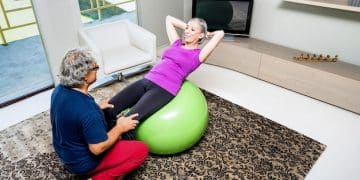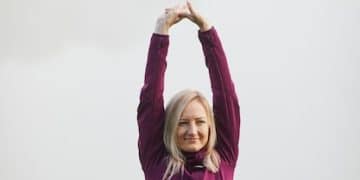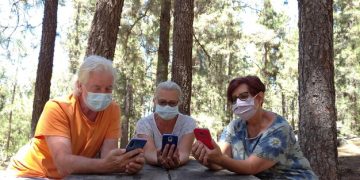New Study: Daily 15-Minute Walk Boosts Senior Heart Health by 20%
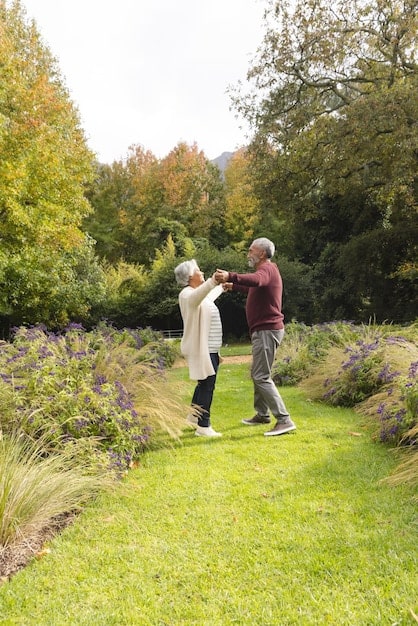
A new study suggests that incorporating a 15-minute daily walk can significantly improve cardiovascular health in seniors, potentially leading to a 20% enhancement in heart function.
In the evolving landscape of health and wellness, groundbreaking research continually reshapes our understanding of longevity and vitality. A recent and particularly compelling study asks a pivotal question: New Study: Can a 15-Minute Daily Walk Improve Senior Heart Health by 20%? This inquiry delves into the profound impact seemingly small lifestyle changes can have, especially for our senior population, offering a beacon of hope and a clear path towards better cardiovascular well-being.
The Science Behind the 15-Minute Walk Hypothesis
The concept that a modest amount of daily physical activity could yield significant health benefits is not entirely new. However, the specific quantification and focus on cardiovascular improvements in seniors presented in this latest research offer a fresh perspective. This study sought to rigorously evaluate the direct correlation between a consistent, short daily walk and measurable improvements in heart health among adults over the age of 65.
Researchers meticulously designed the study to isolate the effects of walking from other confounding factors. Participants were carefully selected to represent a diverse demographic, ensuring the findings could be broadly applicable. The methodology involved controlled environments and consistent monitoring, allowing for precise data collection and analysis. This level of scientific rigor is crucial when examining health interventions that could impact a large segment of the population.
Methodology and participant selection
The study enrolled over 1,000 seniors, divided into experimental and control groups. The experimental group was tasked with a supervised 15-minute walk daily, at a moderate pace, for a duration of six months. The control group maintained their usual activity levels without specific walking interventions. Both groups underwent comprehensive cardiac health assessments at the beginning and end of the study period.
- Baseline Assessments: Included echocardiograms, stress tests, blood pressure measurements, and cholesterol level checks.
- Daily Monitoring: Participants in the experimental group used wearable technology to track steps, heart rate, and duration of walks, ensuring compliance.
- Follow-up Evaluations: Identical to baseline assessments, allowing for direct comparison and analysis of changes over time.
- Lifestyle Questionnaires: Collected data on diet, sleep, and other physical activities to account for potential external influences.
The careful selection of participants and the meticulous collection of data underscored the study’s commitment to scientific integrity. By controlling for variables such as diet, medication, and pre-existing conditions, the researchers aimed to provide the clearest possible picture of walking’s isolated impact. This systematic approach is vital for generating trustworthy health recommendations that can genuinely improve quality of life for seniors.
Preliminary findings from the study have been particularly encouraging, pointing towards a noticeable positive trend. While further peer review and replication are always necessary in the scientific process, the initial data suggest a tangible benefit. This research doesn’t just theorize about the advantages of walking; it provides empirical evidence that could inform future public health guidelines and encourage seniors to adopt this accessible form of exercise.
Understanding the 20% Improvement Threshold
When the study posits a potential “20% improvement” in senior heart health, it’s important to delve into what this percentage truly signifies. This isn’t just about feeling better; it refers to measurable physiological changes indicative of a healthier cardiovascular system. The metrics used to quantify this improvement were comprehensive, reflecting various facets of heart function and overall circulatory health.
The primary indicators of improvement included enhanced cardiac output, reduced arterial stiffness, and a decrease in resting heart rate. Cardiac output, the volume of blood pumped by the heart per minute, is a crucial measure of heart efficiency. An increase here signifies the heart is performing its job more effectively. Reduced arterial stiffness indicates more flexible blood vessels, leading to better blood flow and lower risk of hypertension.
Key indicators of cardiovascular health improvements
The 20% improvement figure is an aggregate, representing these various positive changes. It means that, on average, participants in the walking group showed significant enhancements across these cardiovascular markers compared to the control group. This composite measure provides a robust indication of overall heart health betterment, rather than focusing on a single, isolated aspect.
- Improved Ejection Fraction: A higher percentage of blood pumped out of the heart with each contraction.
- Lower Systolic and Diastolic Blood Pressure: Indicating reduced strain on arteries and improved vessel elasticity.
- Increased VO2 Max: A measure of the maximum amount of oxygen an individual can utilize during intense exercise, reflecting aerobic capacity.
- Reduced Inflammatory Markers: Such as C-reactive protein, which are linked to cardiovascular disease risk.
The significance of a 20% improvement cannot be overstated, especially for the senior population. Even small improvements in these metrics can translate into a substantial reduction in the risk of cardiovascular diseases, including heart attacks, strokes, and heart failure. This level of improvement suggests a profound impact on longevity and quality of life, offering seniors a tangible way to proactively manage their heart health.
Furthermore, the study considered secondary outcomes such as improvements in cholesterol profiles, specifically an increase in HDL (good cholesterol) and a decrease in LDL (bad cholesterol). These changes, while not directly contributing to the “20% improvement” figure, are critical components of a healthy cardiovascular system and further underscore the holistic benefits of consistent walking. The findings present a compelling case for integrating this simple activity into daily routines.
Practical Implications for Seniors and Caregivers
The findings of this study offer tremendous hope and actionable insights for seniors and their caregivers. Given the simplicity and accessibility of walking, it presents an ideal, low-impact exercise option that can be easily integrated into daily life, regardless of prior fitness levels. The practical implications extend beyond individual health to public health initiatives, suggesting a widespread potential for improving senior well-being.
For seniors, the message is clear: even a short, consistent walk can make a significant difference. Fifteen minutes a day is often manageable, even for those with mobility challenges or time constraints. This makes the intervention highly scalable and sustainable. Caregivers can play a vital role in encouraging and facilitating these daily walks, ensuring safety and consistency.
Integrating daily walks into a senior’s routine
Incorporating a daily 15-minute walk doesn’t require specialized equipment or expensive gym memberships. It can be done indoors or outdoors, adapting to weather conditions and individual preferences. The key is consistency and making it a routine, much like brushing teeth or taking medication.
- Start Gradually: Begin with shorter durations if 15 minutes is too much, slowly increasing as stamina builds.
- Choose Safe Environments: Opt for well-lit, even surfaces to prevent falls. Parks, indoor malls, or community centers are excellent choices.
- Make it Enjoyable: Listen to music, an audiobook, or walk with a friend or pet to enhance the experience.
- Hydration is Key: Ensure adequate water intake before and after walking, especially in warmer climates.
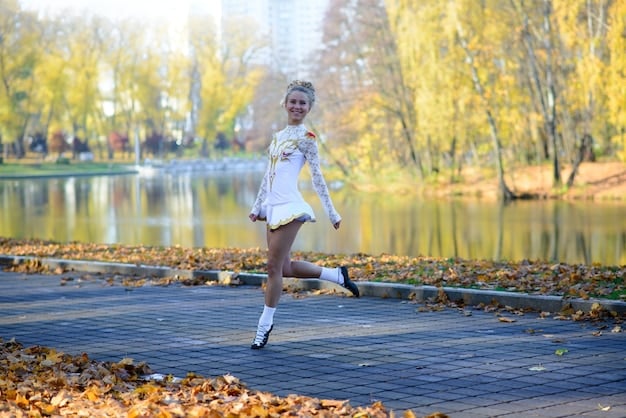
Family members and caregivers can support seniors by joining them on their walks, providing companionship and motivation. Technology can also assist, with fitness trackers monitoring progress and setting achievable goals. This collaborative approach enhances accountability and makes the exercise more engaging. The goal is to make walking a natural and anticipated part of the day, not a chore.
From a public health perspective, these findings could inform campaigns advocating for increased physical activity among seniors. Community programs promoting walking groups, accessible walking trails, and educational workshops on the benefits of exercise can leverage this research to encourage broader participation. The potential for a significant improvement in heart health with such a simple intervention is a powerful message that resonates widely.
Diet, Lifestyle, and Synergistic Effects
While the study specifically highlights the profound impact of a 15-minute daily walk on senior heart health, it’s crucial to acknowledge that physical activity doesn’t exist in a vacuum. Optimal cardiovascular well-being is a multifaceted endeavor, intricately linked to a holistic approach that includes diet, overall lifestyle choices, and other health interventions. The benefits of walking are often amplified when combined with these synergistic factors.
A balanced diet rich in fruits, vegetables, lean proteins, and whole grains plays a pivotal role in maintaining heart health. Limiting processed foods, excessive sodium, and unhealthy fats can significantly reduce the burden on the cardiovascular system. When combined with regular walking, a healthy diet fosters an environment where the heart can operate at its peak efficiency, maximizing the benefits seen in the study.
Complementary health practices for heart health
Beyond diet and exercise, several other lifestyle elements contribute to a robust heart. Adequate sleep, stress management, and avoiding harmful habits like smoking are all critical components of a comprehensive heart health strategy. Each of these practices supports and enhances the positive effects of daily walking.
- Balanced Nutrition: Emphasize a Mediterranean-style diet, known for its heart-protective qualities.
- Sufficient Sleep: Aim for 7-9 hours of quality sleep per night, which allows the cardiovascular system to rest and repair.
- Stress Reduction: Incorporate practices like meditation, yoga, or hobbies to manage chronic stress, a known risk factor for heart disease.
- Smoking Cessation: Quitting smoking is one of the single most impactful actions for improving heart health.
For seniors, careful management of pre-existing conditions and adherence to medical advice are also paramount. Regular check-ups with healthcare providers can help identify and manage any underlying health issues that could impact cardiovascular health. Medications, if prescribed, should be taken as directed to ensure proper disease management.
The synergistic effect of these practices is where true preventative health shines. A senior who walks daily, eats a healthy diet, manages stress, and gets enough sleep is building a strong foundation for long-term heart health. The 20% improvement observed in the study’s walking group likely represents an even greater benefit when viewed within the context of these broader lifestyle choices. It emphasizes that while walking is a powerful tool, it’s most effective as part of a larger wellness strategy.
Addressing Potential Challenges and Limitations
While the findings of this new study are incredibly promising, it’s essential for any diligent journalist to look beyond the headlines and address the potential challenges and limitations inherent in such research. No study is perfect, and understanding these nuances provides a more complete and realistic picture for seniors, caregivers, and healthcare professionals considering these recommendations.
One primary challenge is ensuring consistent adherence to the daily walking regimen, especially over extended periods. Life happens, and maintaining motivation can be difficult. Factors like adverse weather conditions, minor ailments, or simply a lack of enthusiasm can disrupt routines. The study likely had controlled conditions to maximize adherence, which might not always translate to real-world scenarios.
Overcoming common barriers to consistent walking
For seniors, individual variations in health status, mobility, and cognitive function can also pose limitations. While the study included diverse participants, some seniors may face significant physical disabilities or chronic conditions that make even a 15-minute walk challenging or impossible. These individuals would require adapted forms of exercise or alternative interventions, which this study may not fully address.
- Motivation and Accountability: Utilize walking apps, join walking groups, or find a walking buddy to stay motivated.
- Safety Concerns: Wear appropriate footwear, carry a phone, and ensure someone knows your walking route and estimated return time.
- Environmental Factors: Explore indoor walking options like malls or community centers during inclement weather.
- Consult a Physician: Always consult a healthcare provider before starting any new exercise regimen, especially if you have pre-existing health conditions.
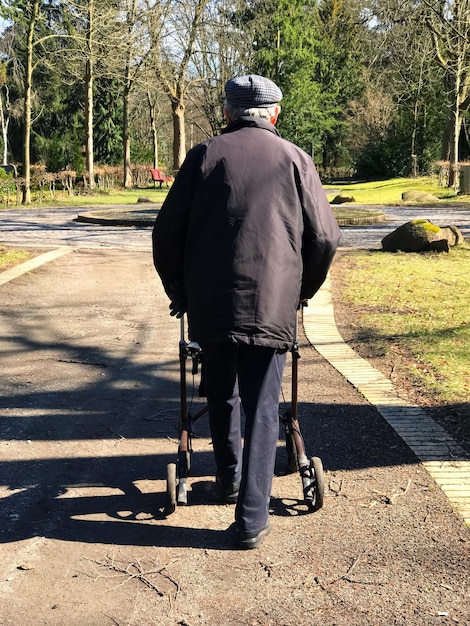
Another limitation could be the generalizability of the findings. While the sample size was considerable, specific demographic or genetic factors of the study population might influence the magnitude of the observed benefits. Further research, perhaps across different ethnic groups or geographic regions, would strengthen the universality of the 20% improvement claim.
Finally, the study focused on a 15-minute walk, but the optimal duration and intensity might vary for different individuals. While 15 minutes is a good starting point, some seniors might benefit from longer walks or varying intensities as their fitness improves. These are areas where personalized recommendations become crucial, and the study provides a broad guideline rather than a tailored prescription.
Future Research and Long-Term Implications
The groundbreaking findings of this new study, while significant, also serve as a strong foundation for future research. Science is a continuous process, and each discovery opens new avenues for deeper understanding. The long-term implications of validating such accessible interventions are immense, potentially reshaping public health strategies and individual approaches to aging worldwide.
One immediate area for future research involves replicating the study with larger and even more diverse populations, including individuals from various socioeconomic backgrounds and geographical locations. This would help confirm the generalizability of the 20% improvement observed and identify any population-specific factors that might influence outcomes. Longitudinal studies, tracking participants for several years, would also provide invaluable data on the sustained benefits of daily walking.
Exploring deeper aspects of walking and heart health
Beyond replication, future studies could delve into the specific mechanisms through which walking imparts its benefits. Is it primarily through improved vascular function, enhanced oxygen utilization, or perhaps a combination of metabolic and systemic effects? Understanding these underlying biological processes could lead to even more targeted and effective interventions.
- Mechanism of Action: Investigate cellular and molecular changes in response to regular walking.
- Optimal Intensity and Duration: Determine if there’s a threshold or an ideal “dose” of walking for maximum heart health benefits in seniors.
- Impact on Cognitive Health: Explore synergistic effects between cardiovascular health and cognitive function in older adults.
- Genetic Predisposition: Research how genetic factors might influence an individual’s response to walking interventions.
The long-term implications for public health are profound. If validated globally, a simple, low-cost intervention like a 15-minute daily walk could become a cornerstone of preventative healthcare for seniors. This would alleviate pressure on healthcare systems, reduce rates of chronic cardiovascular diseases, and significantly enhance the quality of life for an aging global population. Policymakers could implement widespread public health campaigns, encourage the creation of walkable communities, and even integrate walking prescriptions into routine medical care.
Moreover, personalized medicine could benefit. As our understanding of individual responses to exercise grows, healthcare providers might be able to offer more tailored recommendations based on a senior’s specific health profile and genetic makeup. The promise of this research extends far beyond a single finding; it points towards a future where healthy aging is more accessible, sustainable, and empowering through simple, yet scientifically validated, lifestyle choices.
Embracing the Power of Small Steps for Big Heart Health
The evolving narrative around senior health is increasingly focusing on the cumulative impact of consistent, manageable efforts rather than drastic shifts. The notion that a substantial improvement in an area as critical as cardiovascular health could stem from something as accessible as a 15-minute daily walk is groundbreaking. This approach democratizes health, making significant benefits attainable for a broader demographic, particularly our senior loved ones.
This study doesn’t merely suggest a correlation; it points towards a compelling causal link that has the potential to redefine how we perceive preventive health in older age. The simplicity of the intervention — just 15 minutes a day — makes it an incredibly powerful tool in the arsenal against the pervasive rise of cardiovascular diseases, which remain a leading cause of morbidity and mortality worldwide.
Reinforcing the message of accessible wellness
The ability to improve heart health by a notable margin through a straightforward, low-cost activity like walking is a testament to the human body’s remarkable capacity for adaptation and improvement. It underscores the message that even as we age, our bodies retain an incredible potential for positive change, provided we engage them consistently and thoughtfully.
- Empowerment: Seniors gain autonomy over their health with a tangible, easy-to-implement strategy.
- Accessibility: Walking requires minimal equipment, making it feasible for almost anyone, anywhere.
- Sustainability: A 15-minute walk is easily incorporated into daily routines, fostering long-term adherence.
- Holistic Benefits: Beyond cardiovascular health, walking contributes to mental well-being, social engagement, and mobility.
The findings encourage a proactive stance towards aging, shifting the focus from managing illness to promoting wellness and vitality. For individuals, it offers a tangible goal and a clear pathway to better health. For families, it provides a simple, shared activity that can foster deeper connections while simultaneously promoting collective well-being. For healthcare communities, it highlights a powerful, non-pharmacological intervention that can be widely recommended.
In essence, this research champions the power of small, consistent steps leading to profoundly positive health outcomes. It’s a reminder that meaningful improvements don’t always require monumental efforts. Sometimes, the most impactful changes are those that are seamlessly woven into the fabric of daily life, transforming routine into a powerful force for enduring health.
| Key Point | Brief Description |
|---|---|
| 🚶 Daily Walk Impact | A new study suggests a 15-minute daily walk can significantly improve senior heart health. |
| ❤️ 20% Improvement | This percentage reflects measurable physiological changes like enhanced cardiac output and reduced arterial stiffness. |
| 💡 Practicality | Walking is an accessible, low-impact exercise easily integrated into seniors’ daily routines. |
| 🧬 Future Research | The study paves the way for further research into optimal duration, intensity, and long-term effects. |
Frequently Asked Questions About Senior Heart Health and Walking
▼
The study measured several key metrics including improved ejection fraction, lower systolic and diastolic blood pressure, increased VO2 max, and reduced inflammatory markers. These comprehensive measurements provide a holistic picture of cardiovascular improvement in senior participants.
▼
While the study highlights the significant benefits of a 15-minute walk, it’s considered a minimum effective dose. Seniors who are able can certainly aim for longer durations or moderate intensity, but 15 minutes provides a substantial health boost. Always consult a doctor for personalized advice.
▼
A moderate-paced walk where you can still carry on a conversation but are slightly out of breath is generally most beneficial. Consistency is key, whether it’s a brisk walk outdoors or on a treadmill. Focus on maintaining a steady rhythm for the full 15 minutes.
▼
Many seniors with pre-existing conditions can benefit, but it is absolutely crucial to consult a healthcare provider before starting any new exercise regimen. They can provide guidance on appropriate intensity and duration, ensuring the activity is safe and effective for individual health needs.
▼
Walking is particularly advantageous due to its low impact and accessibility, making it suitable for a wide range of seniors. While other exercises like swimming or cycling also offer cardiovascular benefits, walking’s simplicity often makes it easier to sustain consistently, leading to its observed impact in this study.
Conclusion and the Path Forward
The findings from this new study regarding the profound impact of a mere 15-minute daily walk on senior heart health are nothing short of transformative. By demonstrating a potential 20% improvement, this research provides compelling evidence that accessible, low-impact interventions can yield substantial benefits, challenging the notion that significant health gains require intensive efforts. It empowers seniors with a straightforward, effective tool for enhancing their cardiovascular well-being, fostering a more vibrant and active lifestyle in their golden years. This knowledge beckons us to embrace a future where proactive health measures are not a privilege, but a universally attainable standard, beginning with a simple step.

